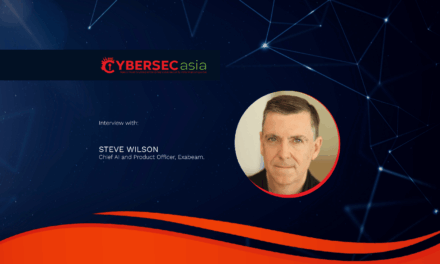Explore how AI can strengthen threat detection and response; address ethical considerations, and, under constant human scrutiny, proactively keep organizations safe.
Incredibly sophisticated cyber threats have made organizations turn to AI-driven solutions to strengthen their cybersecurity posture. At the same time, Endpoint Detection and Response (EDR) and Extended Detection and Response (XDR) technologies nowadays are increasingly leveraging AI and ML technology in their platforms.
According to Kaspersky, the implementation of ML has provided a platform for EDR and XDR solutions to create a normal activity baseline within organizations. Any subtle deviations from baseline can be flagged for suspicious activity. Said the firm’s AI Technology Research Center Group Manager, Vladislav Tushkanov: “AI is no longer a future concept in cybersecurity: it’s already reshaping the way we detect, respond to, and prevent threats… As cyber threats grow in scale and sophistication, AI is becoming the foundation for resilient, proactive cyber defense.”
Unlike rule-based detection systems, which rely on predefined patterns, ML-driven behavioral analysis can detect previously unknown threats, such as zero-day attacks and more advanced malware, according to the firm.
However, it is important to note that human expertise is still critical in interpreting and responding to complex or ambiguous alerts.
AI in threat hunting
The manual method of threat hunting generally involves searching logs and alerts for various items thought to be suspect. Only then can security analysts deem a possible information security risk.
This time-consuming method has been, and now some say it is becoming, less central. AI can assist with threat hunting by correlating data from many sources and uncovering indicators of compromise that would not be seen easily.
Nonetheless, effective threat hunting typically combines AI-driven insights with the experience and intuition of human analysts.
- Minimizing the false positive rate
When security tools generate an overwhelming number of alerts and high false positive rates, security teams may experience alert fatigue and inadvertently overlook real threats. AI is enhancing alert precision by continuously improving detection models while prioritizing threats based on risk levels.
Therefore, while AI-driven EDR and XDR is relegated to the routine tasks of distinguishing benign anomalies from actual threats, human teams can focus on high-impact incidents and save other investigations from far more distraction, according to the firm.
It is important to recognize, however, that AI models themselves can be subject to bias or errors, and regular review and tuning are necessary. - Automated incident response and remediation
With AI, EDR and XDR platforms have a real-time capacity to respond to threats. Upon the detection of a potential attack by such a system, it could automatically trigger some predefined response actions: e.g., isolating a compromised device, blocking malicious IP addresses, or quarantining suspicious files among others. This will cut the time of incident response and lower security teams’ workloads from operational response, allowing them to focus on strategic decision-making instead.
However, automated responses should be carefully managed to avoid unintended consequences, and human oversight remains important. - Predictive threat intelligence
AI enhances the ability to comprehend threats by continuously assimilating global threat data, learning from past incidents, and predicting emerging attack patterns. EDR and XDR platforms, using ML models that have been trained on massive security datasets, can then predict incoming threats and harden defenses ahead of time. This predictive approach helps organizations stay ahead of attackers and adapt their security strategies to evolving threats.
Still, the effectiveness of predictive models depends on the quality and diversity of the data they are trained on.
Risks, limitations and ethical considerations
While AI brings significant benefits to EDR and XDR, there are important considerations. AI and ML models can sometimes produce biased or inaccurate results if not properly trained and validated, and may raise privacy concerns due to extensive data monitoring.
Industry best practices recommend maintaining human oversight (“human-in-the-loop”) to interpret AI-driven findings and ensure ethical use. Additionally, as attackers increasingly use AI, defenders must remain vigilant against AI-generated threats and misinformation.
The future of AI in EDR and XDR
Upcoming generational improvements in AI and ML will only further strengthen the ability of EDR and XDR in accurately detecting, analyzing, and responding to threats. Some of the key trends to keep an eye on are:
- Explainable AI: As AI systems have grown more and more complex, security teams will demand more transparency on why a decision has been made by an AI tool. XAI will clarify for analysts why certain threats are flagged and increase their trust in AI security products.
- AI vs AI security: While cybercriminals utilize AI to evade detection, security vendors will develop countermeasures to combat AI-driven threats, leading to an ongoing AI arms race.
- Self-learning security systems: AI models will continually develop, learning from new attack patterns and automatically adapting to new threats while minimizing the requirements for manual updates from the human side.
When EDR and XDR solutions are powered properly by AI, and deployed in a balanced approach, organizations will be able to address ethical, privacy, and operational challenges alongside technological innovation.


















